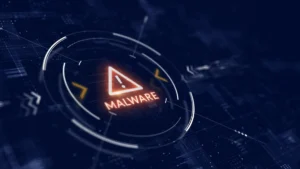
In a bid to combat the increasing threat of malware attacks, the government is gearing up to implement a robust cybersecurity policy. The new policy aims to bolster the country’s defense against cyber threats and enhance the resilience of its digital infrastructure.
With the ever-growing reliance on technology and the surge in cybercrime incidents, this proactive approach from the government is a significant step towards safeguarding the nation’s digital landscape.
The rapid advancement of technology has brought numerous benefits, but it has also exposed vulnerabilities that malicious actors exploit to carry out cyber attacks.
As the world becomes more interconnected, cybercriminals have become increasingly sophisticated, employing innovative techniques to breach security systems and compromise sensitive data. Recognizing the critical need to address this issue, the government has undertaken the task of revamping its cybersecurity strategy.
Strengthening Defenses and Promoting Awareness
The new cybersecurity policy emphasizes the importance of strengthening defenses at various levels. It focuses on enhancing the capabilities of organizations to detect, prevent, and respond to cyber threats effectively.
By implementing state-of-the-art technologies and fostering collaboration between public and private entities, the government aims to create a robust defense system that can swiftly counter evolving cyber threats.
To achieve this, the policy outlines a comprehensive framework for information sharing and coordination among different stakeholders. By encouraging the exchange of intelligence and best practices, the government aims to foster a collective effort in combating cybercrime.
Furthermore, the policy emphasizes the need to promote awareness among individuals and organizations, highlighting the importance of adhering to cybersecurity best practices and adopting a proactive approach to threat mitigation.
Public-Private Partnership: A Key Pillar
Under the new cybersecurity policy, the government recognizes the importance of collaboration between the public and private sectors. By establishing a strong public-private partnership, the government aims to leverage the expertise and resources of both sectors to effectively tackle cyber threats.
This collaboration will facilitate the development of innovative solutions and the sharing of intelligence to stay one step ahead of cybercriminals.
The policy also focuses on promoting research and development in the field of cybersecurity. By investing in cutting-edge technologies and encouraging innovation, the government aims to nurture a skilled workforce capable of addressing emerging cyber threats.
This strategic approach will not only enhance the country’s cybersecurity capabilities but also contribute to the growth of the digital economy.
National Cyber Security Strategy 2023 to Be Released Soon
The Indian government is preparing to release the National Cyber Security Strategy for the year 2023, aiming to strengthen the nation’s defenses against cyber threats. With technology becoming an integral part of everyday life, the need for robust cybersecurity measures has never been more crucial. The upcoming strategy is expected to address the evolving landscape of cybercrime and provide a comprehensive framework to safeguard critical infrastructure, businesses, and individuals.
The National Cyber Security Strategy 2023 focuses on a multi-faceted approach, combining policy, technology, and education to combat cyber threats effectively. As the world becomes increasingly interconnected, the strategy recognizes the importance of international collaboration and cooperation in tackling cybercrime. It aims to foster partnerships with other countries, organizations, and cybersecurity experts to exchange information, share best practices, and collectively respond to cyber incidents.
One of the key aspects of the strategy is the emphasis on building a skilled cybersecurity workforce. Recognizing the shortage of cybersecurity professionals, the government plans to invest in training programs and educational initiatives to bridge the skills gap. By nurturing a talent pool of cybersecurity experts, India aims to enhance its capabilities in detecting and preventing cyber threats.
In addition to human resources, the strategy also highlights the significance of technological advancements in bolstering cybersecurity defenses. The government intends to promote research and development in areas such as artificial intelligence, machine learning, and blockchain technology to stay ahead of emerging threats. By harnessing the power of these cutting-edge technologies, India aims to develop innovative solutions that can proactively identify and neutralize cyber threats.
Furthermore, the National Cyber Security Strategy 2023 recognizes the need for increased public awareness and engagement. Cybersecurity is not solely the responsibility of the government or organizations; it requires active participation from individuals as well.
The strategy aims to educate citizens about online safety, data protection, and best practices for secure digital behavior. By fostering a culture of cyber hygiene and responsible online conduct, India aims to create a safer digital ecosystem for all its citizens.
Conclusion
As the frequency and severity of cyber attacks continue to escalate, the government’s initiative to implement a new cybersecurity policy comes at a crucial time. By taking proactive measures to combat malware attacks, the government is prioritizing the safety and security of its citizens’ digital lives.
The comprehensive approach, emphasizing collaboration and awareness, is poised to strengthen the country’s cybersecurity defenses and mitigate the risks posed by cybercriminals.
With this new policy, the government is sending a clear message that it is committed to safeguarding the nation’s digital infrastructure and ensuring a secure and resilient cyberspace for all.

